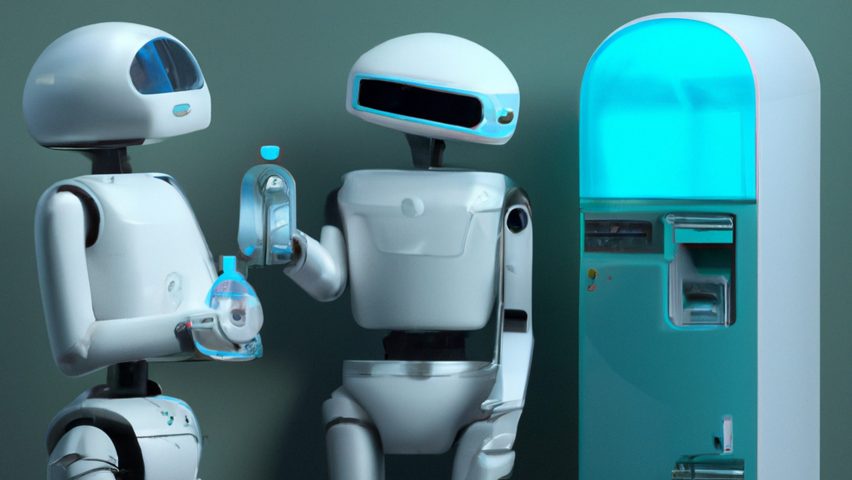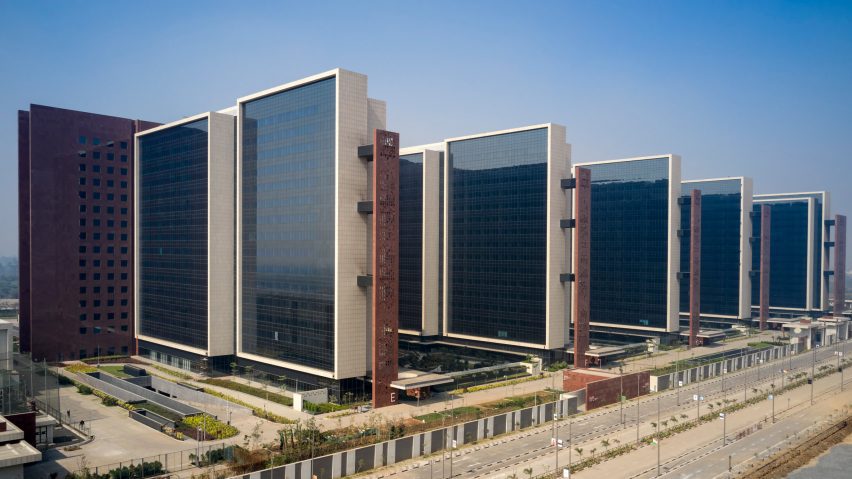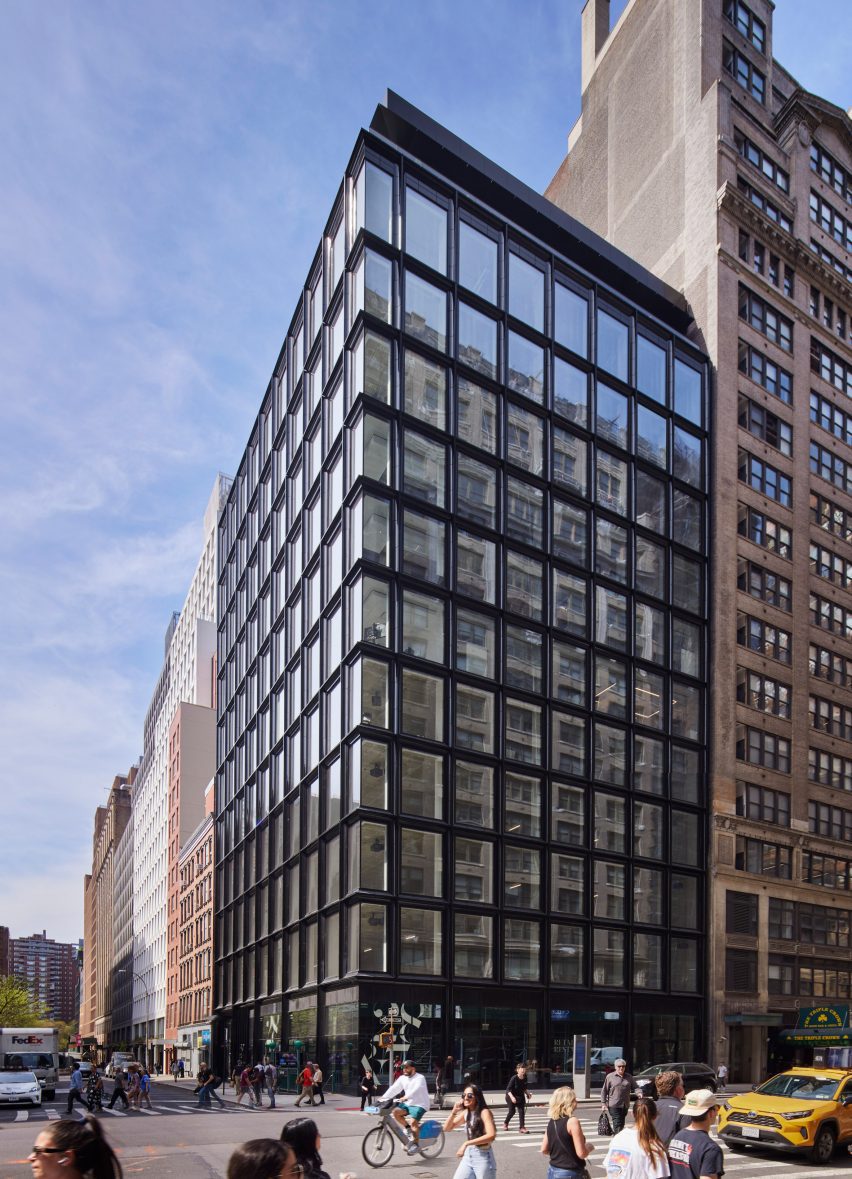
"AI will never replace a Frank Lloyd Wright or a Mies van der Rohe" says commenter
In this week's comments update, readers are debating a feature in our AItopia series that examines the question of whether AI technology will end up taking architects' jobs.
As investment bank Goldman Sachs predicts that AI could replace the equivalent of 300 million jobs globally across all industries and a survey by design technology firm RevitGods found that 55 per cent of US architects are "moderately concerned" about being replaced by AI, the debate around the impact of the technology on the built environment continues.
"It's an enormous issue that we need to try and deal with," New York-based designer Sebastian Errazuriz told features editor Nat Barker.
"People always say, 'but isn't AI just another tool?' Right now it looks like a tool, but the tool is getting really good, really fast – and the purpose of this tool is to think for itself."
But commenters aren't convinced that drastic change is right around the corner.

"AI will probably be very good at efficiently mass-producing more boring, soulless buildings"
"It's inevitable that more and more of architects' work will be replaced by AI," wrote Vince Cap. "The more the technology advances, the more tasks it will be able to carry out. Surely this won’t happen overnight. At least, I hope to make it to [my] pension."
"I think it's going to be a while," agreed Jon, while Tim thought that "based on any of the meaningless imagery presented by AI so far," architects were in the clear for the foreseeable future.
Joeyrobots believes AI is the least of our worries: "Of course, we all realise that we will actually lose our architecture jobs due to global economic collapse driven by climate change."
Other commenters, meanwhile, argued that the human touch will never go out of fashion.
"Well, if AI does take our jobs, it will expedite the process of the world becoming increasingly dull, boring, soulless and copy-paste," reasoned Gytis Bickus.
"If we have learnt anything from the last 100 years, it's that people are getting bored of soulless, glass cubes. There's been a shift toward craft, the hand-made and, most importantly, the human-made. AI will probably be very good at efficiently mass-producing more boring, soulless buildings, but I don't think that's what people want," they continued.
ScuffedShoes was on the same page, agreeing that "yes, it will put many architects out of a job, [but] not starchitects. AI will never replace a Frank Lloyd Wright or a Mies van der Rohe or any architect of unique vision."
Is the advancement of AI fatal for architects? Join the discussion ›

"Like a Serra crossed with a data centre"
Also providing plenty of fodder for commenters this week was the Morphogenesis-designed Surat Diamond Bourse in India, which has surpassed the Pentagon to become the world's largest office building.
Set on the outskirts of the city of Surat, the 660,000-square-metre building was designed as a "city within a city" to house the world's largest community of diamond traders.
Some commenters considered the project a "monstrosity", while others thought it sculptural.
"Totally gorgeous. Like a Serra crossed with a data centre," wrote Franc Lea.
"Wonderful," agreed Anunay Kumar. "After all, it is diamonds which are the central theme."
Others took a less generous view.
"A building that has no intrinsic value for traders of a commodity that has no intrinsic value," wrote Whateverandeveramen, whose comment was upvoted eight times.
"About as soulless as large parts of the diamond trade," echoed Trewus, while Le canal hertzien labelled it "an architectural disaster".
"A gargantuan catalogue of shapes, materials and not much architecture," wrote Pa Varreon. "[Morphogenesis] should perhaps make a single choice of style while they are skimming through their architectural school books."
Is the world's largest office building a diamond or a dud? Join the discussion ›

"Nothing says New York like glazed black terracotta!"
It may be the summer holidays, but office buildings were on everyone's minds this week, with a black-glazed terracotta-clad building by SOM also leading to debate in the comments section.
Called 28&7, the 12-storey office building in Manhattan's Chelsea neighbourhood was designed by SOM to complement the nearby masonry-clad structures while maintaining a modern look.
Commenters largely thought the building fit the bill.
"That looks cool, elegant, refined [and] respectful of context," wrote Jb. "And it chose not to be a skyscraper."
"The building is really nice, and actually 28th street between 7th and 8th has become itself a bit of an architectural display of facades. Therefore I agree some sobriety was needed to avoid creating a facade collage," agreed Pablo Simg.
Other commenters saw echoes of Herzog & de Meuron's 253 40 Bond residential building in NoHo, although Trewus was "not complaining because all these building facades are what is appropriate for New York, as opposed to the blue-grey glass desert at Hudson Yards."
"Lacks all the rhythmic subtlety that Herzog & de Meuron poured into their 40 Bond, which is probably the gold standard for 'terracotta' facades," argued JZ. "But as a background building (which it's debatable whether corner buildings should be), it's fine."
Franc Lea joked that the facade is typically NYC, commenting "nothing says New York like glazed black terracotta!"
Does the SOM design work for you? Join the discussion ›
Comments update
Dezeen is the world's most commented architecture and design magazine, receiving thousands of comments each month from readers. Keep up to date on the latest discussions on our comments page and subscribe to our weekly Debate newsletter, where we feature the best reader comments from stories in the last seven days.